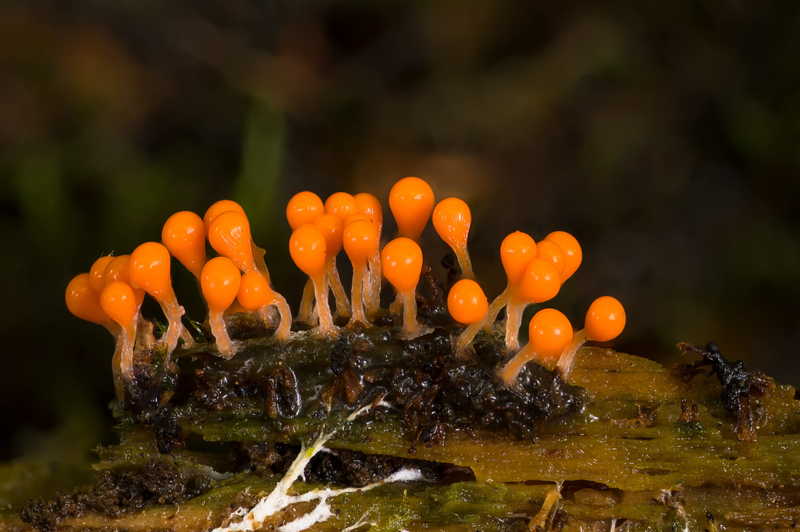A kind of slime mold that often grows in gardens and woods is called orange mold. That information is the answer to the question of “what is orange mold.”
We hope that got you excited because that’s just a glimpse of what this article is all about. As you further read this post, you will learn more about orange molds and how to distinguish them.

You will also know if orange mold is dangerous and learn the overall process of removing them. So, mentally prepare yourself for the load of facts you are going to receive.
Before you proceed, you can click the link if you also want to know what yellow mold is.
Defining Orange Molds
Just like what you have read at the beginning of this post, orange mold is one of the species of slime molds. These slime molds differ in color and are sponge-like.
Going back, the scientific name of orange mold is fuligo septica. Considering their appearance, they are also called dog vomit or scrambled egg slime mold.
Orange molds also need a high level of humidity, oxygen, and moisture to develop. That is the reason why they are often seen in gardens and mulches.
The wind blows the mold spores into a specific surface, then these spores form clusters called blobs. If ever the blob got torn apart, they can put themselves back together again.
Another characteristic that they have is they slowly creep into a certain surface. For a day, orange molds can only move a few feet.
You already know what orange molds are. Now is the time to learn how to distinguish them.
How Can I Distinguish Orange Mold?
Initial stage
The first thing you must observe to classify an orange mold is its surface and texture. Remember that the outer appearance of an orange mold is furry.
As the name implies in itself, orange molds are colored orange. However, they are not limited to this hue — they vary in yellow, reddish, or pinkish color.
A factor that is quite common in slime molds, you will also notice that orange molds are spongy. This spongy characteristic does not allow them to retain their shape when touched.
Matured stage
There is nothing much to remember when it comes to the characteristics of matured orange mold. You only have to assess two things: moisture and appearance.
A matured orange mold is already dry. For the appearance, on the other hand, check if it is crusty — hard on the surface yet still breakable.
Keep in mind that you need to use hand gloves and any edged material in checking. Do not use your bare hands!
Is Orange Mold Dangerous?
One of the most intriguing questions is about to be answered. Are orange molds harmful to humans and plants?
To humans
According to Water Mold Fire Restoration, orange mold does not impose a grave health threat to humans. Still, you should not ignore its risks.
Orange mold can still cause allergic reactions. Inhalation and physical contact can lead to ailments like skin rashes and asthma.
To plants
Orange mold does not directly harm the plant where it thrived. They protect them from the destructive effects of other organisms.
However, this mold can still pose harm to them. Since orange mold also needs to survive, they get water from the plants, causing them to dry and die.
To avoid such unfortunate dangers from orange mold, the last part of this post will help you.
How Do I Remove Orange Mold?
Step #1. Locate the area where the orange mold is present
Checking every area will assure you that there will be no molds left behind after. Putting a mark from end-to-end of the location will make the next step much easier.
Step #2. Seal off the area where the orange mold is present
After you locate the mold-covered areas, you must seal them. Doing this will lessen the moisture that the mold is getting, and it will prevent further spreading.
Step #3. Get rid of the orange mold
Killing the orange mold can be done through fogging and spraying. Throw all the destroyed mold to keep yourself away from harm.
Step #4. Clean and dry the area
Removing the orange mold will not stop by simply killing them. The last thing you must do is to clean the area and make it dry as possible.
We hope these simple steps can guide you in removing orange mold within your vicinity. Nevertheless, we highly recommend that you seek professional help in doing so.
Feel free to visit this article if you want to learn how to get a free mold inspection.
Conclusion
You have got access to information about what is orange mold and how to distinguish them. Also, you have learned whether orange mold is dangerous and the steps in removing them.
With all the facts and data given to you, we expect you to free yourself from unpleasant sight and surroundings caused by orange molds.
